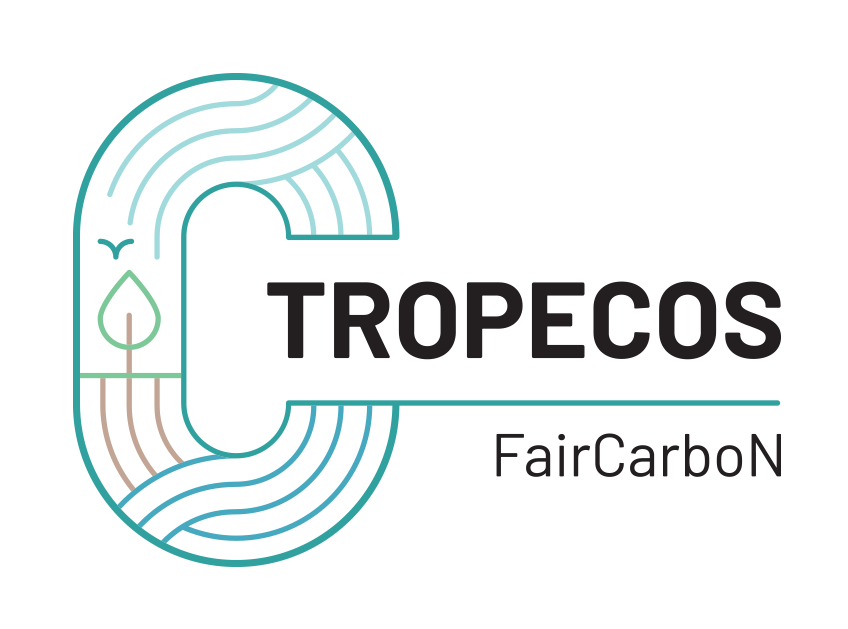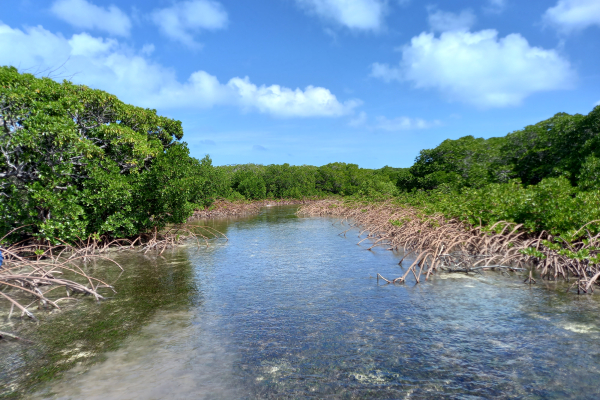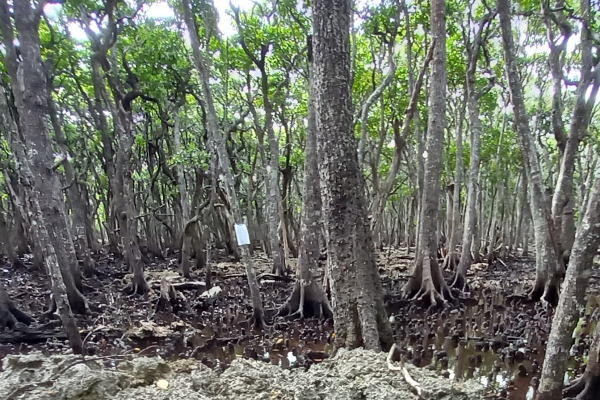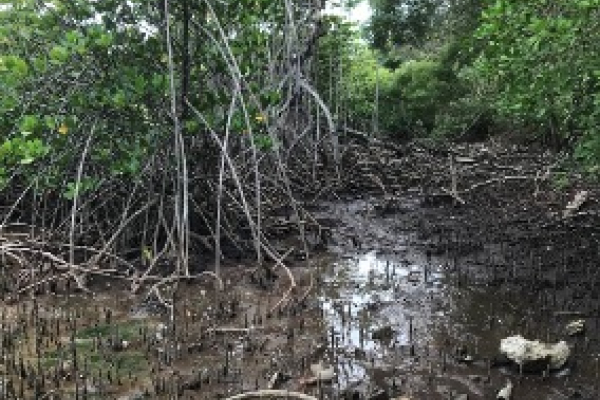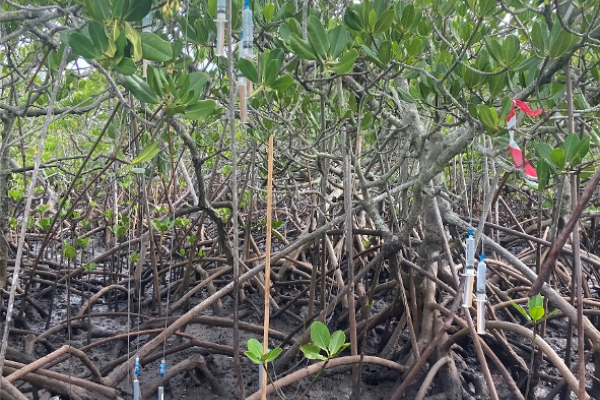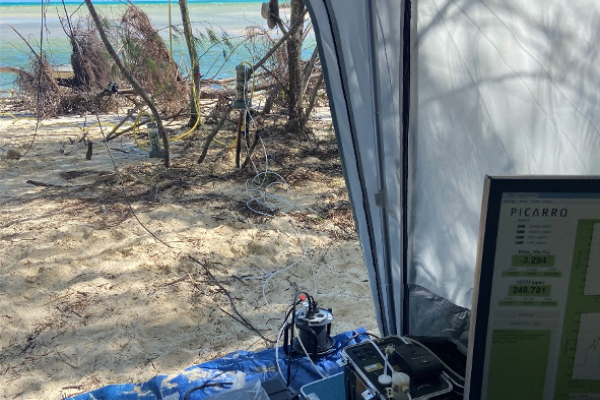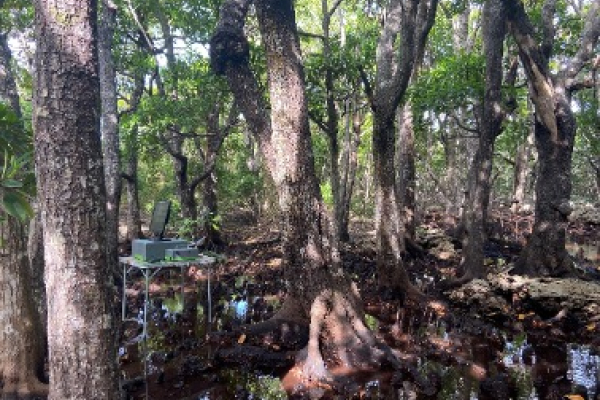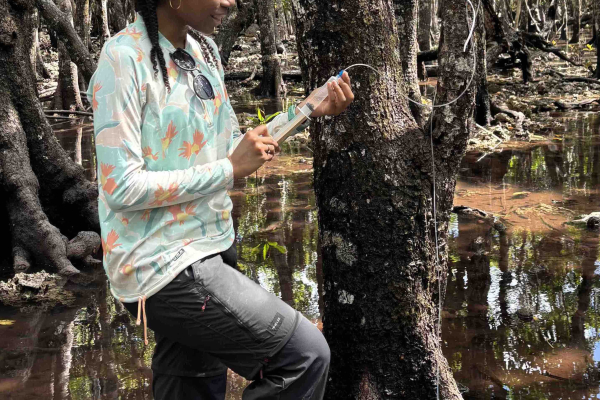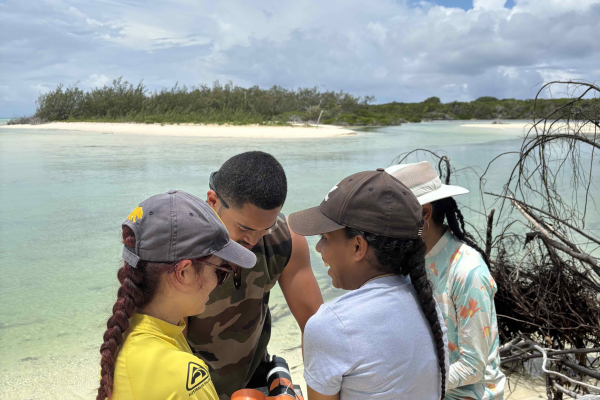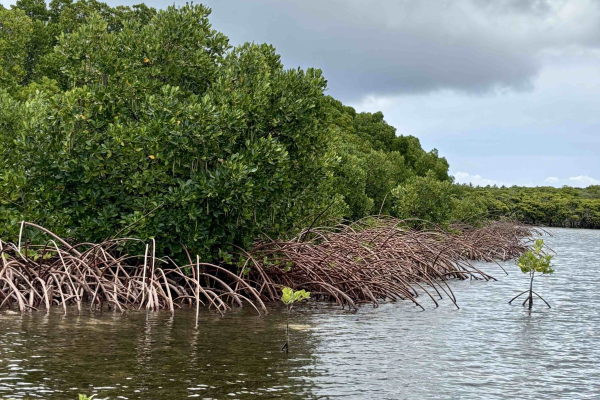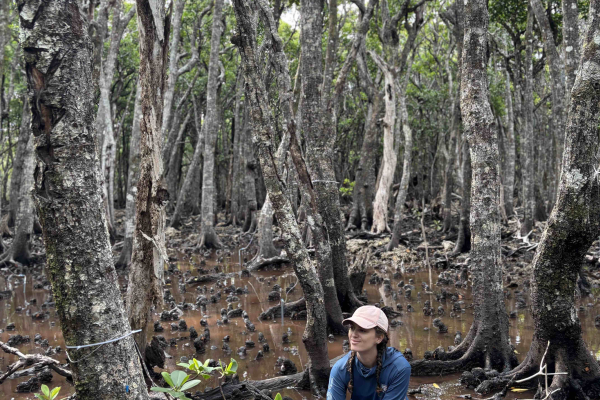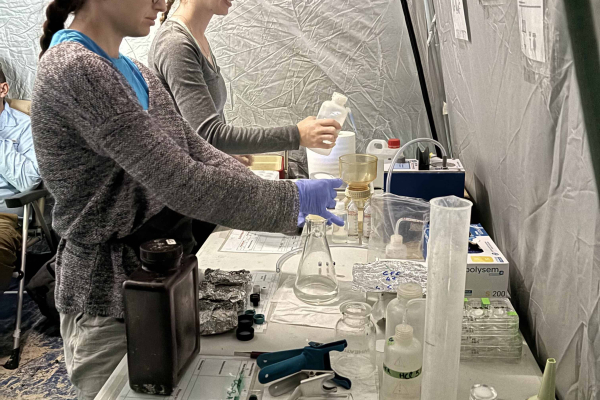TROPECOS Research in New Caledonia is made thanks to the infrastructures of the University. In New Caledonia, two mangrove forests are studied within the framework of the TROPECOS project: A pristine mangrove forest developing on a carbonated island, Ouvéa, and an urban mangrove forest located on the south-west coast of the main island, near the capital Nouméa.
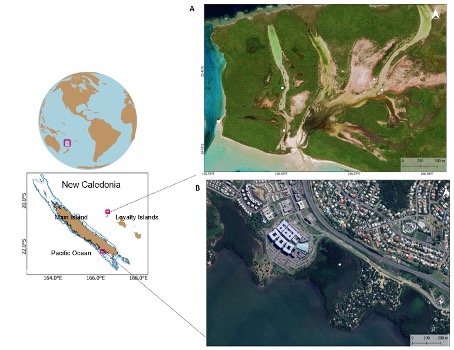
Map of the study sites in New Caledonia. A is the pristine mangrove forest in Ouvéa Island, and B the urban mangrove forest in Koutio (Source: Google Earth 2023).
New Caledonia is a French archipelago located in the South Pacific Ocean. The main island, "Grande Terre," is 400 km long and 50 km wide. It is bordered to the east by the Loyalty Islands (Ouvéa, Lifou, and Maré), the Isle of Pines to the south, and Belep to the north. The climate is tropical, with semi-arid conditions on the west coast of Grande Terre. Mangrove forests in New Caledonia cover 35 000 hectares, mainly along the west coast of Grande Terre, representing 80% of the coastline there. The only other island supporting mangrove forests is Ouvéa, a coral atoll. The mangroves of the west coast of Grande Terre and Ouvéa exhibit diversity in mangrove species, soil types, and inputs.
New Caledonia has 270 000 inhabitants, reflecting a 200% population increase since 1965. Although the population density is low, nearly 70% of the population lives in the four major cities, all located in the southwest, near the capital, Nouméa. The urban population of New Caledonia rose from 37% in 1960 to 72% in 2021. As such, studying the impact of urbanization on coastal ecosystems is essential.
The mangrove of Ouvéa can be considered as a pristine site, developing on carbonate soil rather than sediments, making it unique. This mangrove is characterized by a complex network of channels, with a unique channel opening into the Ouvéa lagoon. Geologically, the atoll consists primarily of carbonate formations, including old coral reefs (Ullmann et al., 2014). The karstic mangrove soils exhibit varied granulometry, from fine sand to silts and clay, promoting water exchanges and retention. The high sand content in the soil, often exceeding 50%, reflects the carbonate composition. Additionally, the presence of seagrass beds in sandy sediments in adjacent areas and within mangrove creeks adds an important ecological dimension, providing nursery zones for many species such as juvenile lemon sharks and contributing to sediment stabilization.
Preserved from the impacts of anthropogenic activities and external organic inputs, the Ouvéa mangrove holds immense cultural value, designated as a taboo area by the local communities. Restrictions on human access to this mangrove contribute to the effective preservation of its pristine state.
The Ouvéa mangrove hosts various mangrove species at different growth stages, with a notable dominance of R. apiculata and B. gymnorhiza. The coexistence of these two species creates diverse habitats, supporting a complex and dynamic biodiversity. This diversity contributes significantly to the health and resilience of the Ouvéa lagoon ecosystem.
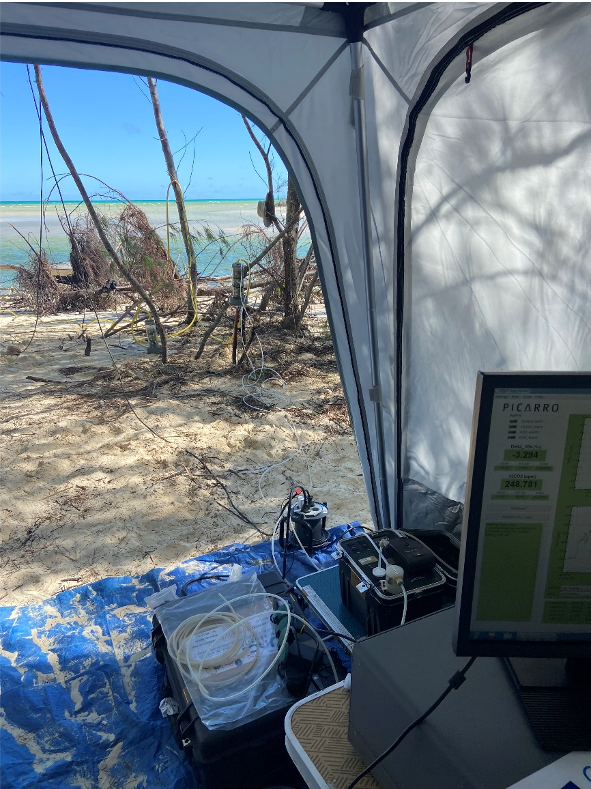
CO2/CH4 gas analyzer measuring soil-air exchange in Bruguiera (Credit: Océane Tardivel)
The mangrove in Koutio is considered an "urban" mangrove forest. This forest is typical of the mangroves found on the west coast of the island, with two main species forming monospecific stands: Rhizophora stylosa seaward, and Avicennia marina landward. The forest is located along the coast of an old residential area (Koutio), primarily composed of housing (10,000 inhabitants) and a few gas stations. For more than 50 years, rainwater runoff from Koutio has entered the mangrove forest, altering its conditions. For instance, at the runoff entry, the mangrove trees are constantly inundated with freshwater, resulting in lower salinity. As a result, between the runoff and the A. marina stand, another R. stylosa stand has developed, with much taller trees (~8 m) compared to the usual forests on the west coast of Grande Terre (~2 m) (Robin et al., 2022).

Visual pollution of the urban mangrove forest in Koutio (Credit: Sarah Robin)
Robin, S. L., Marchand, C., Mathian, M., Baudin, F. & Alfaro, A. C. Distribution and bioaccumulation of trace metals in urban semi-arid mangrove ecosystems. Frontiers in Environmental Science 10, 1054554 (2022).
Ullmann, C. V., Campbell, H. J., Frei, R., & Korte, C. Geochemical signatures in Late Triassic brachiopods from New Caledonia. New Zealand Journal of Geology and Geophysics, 57(4), 420–431 (2014).
